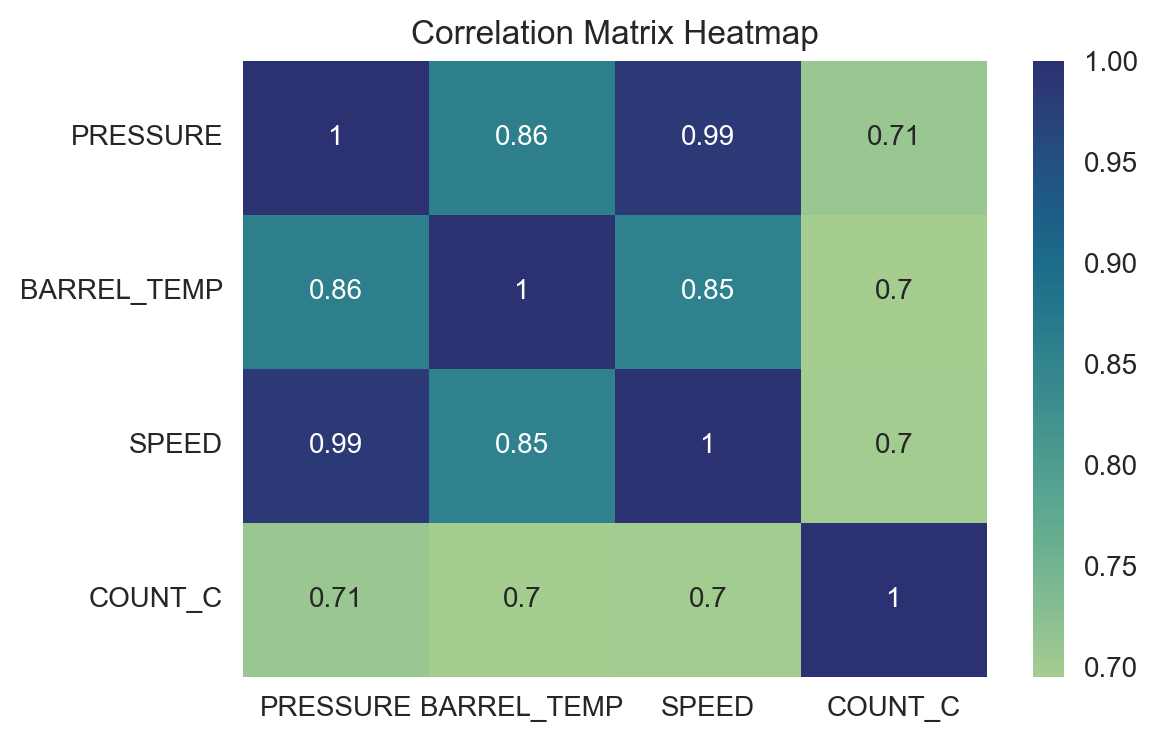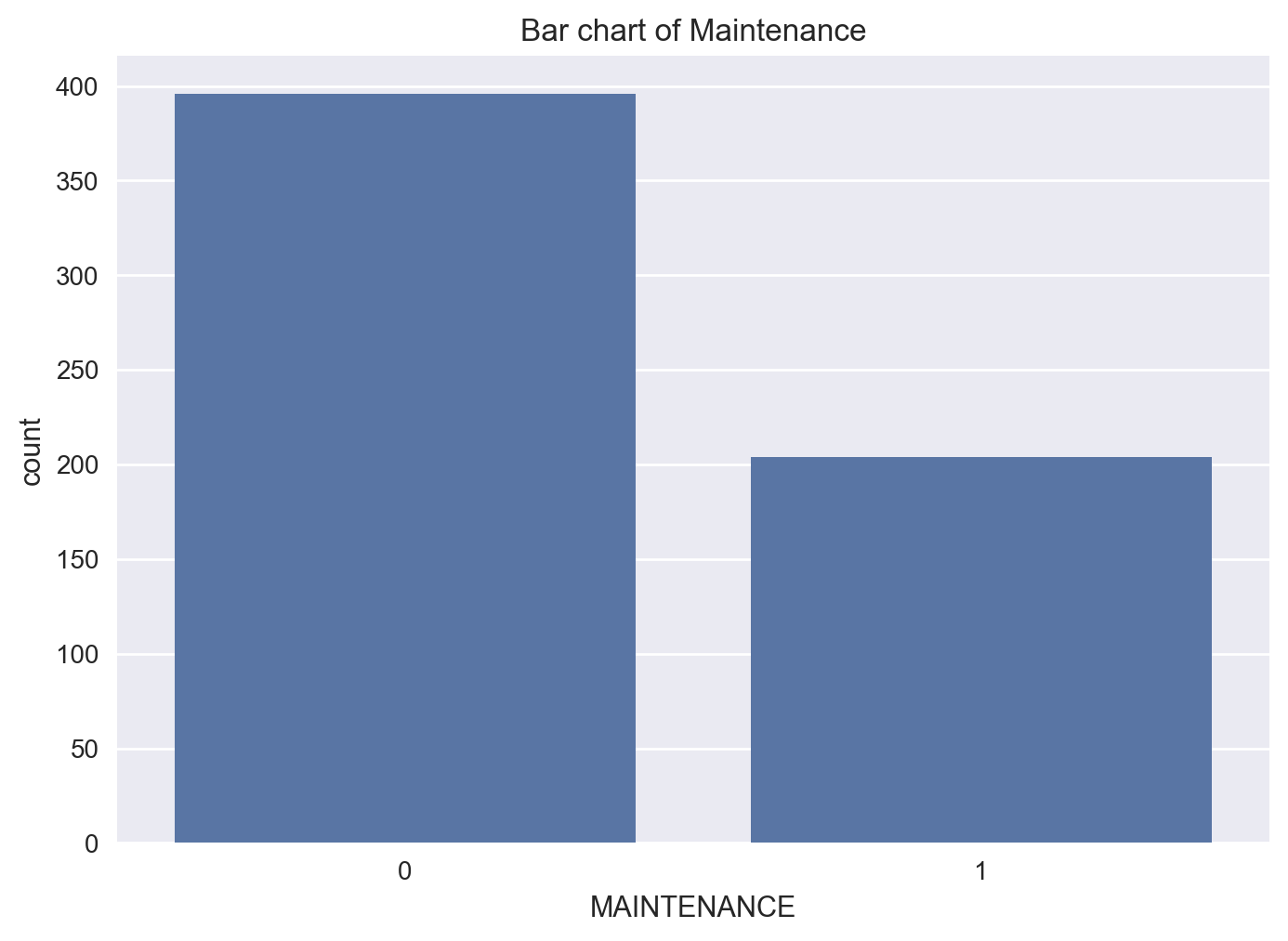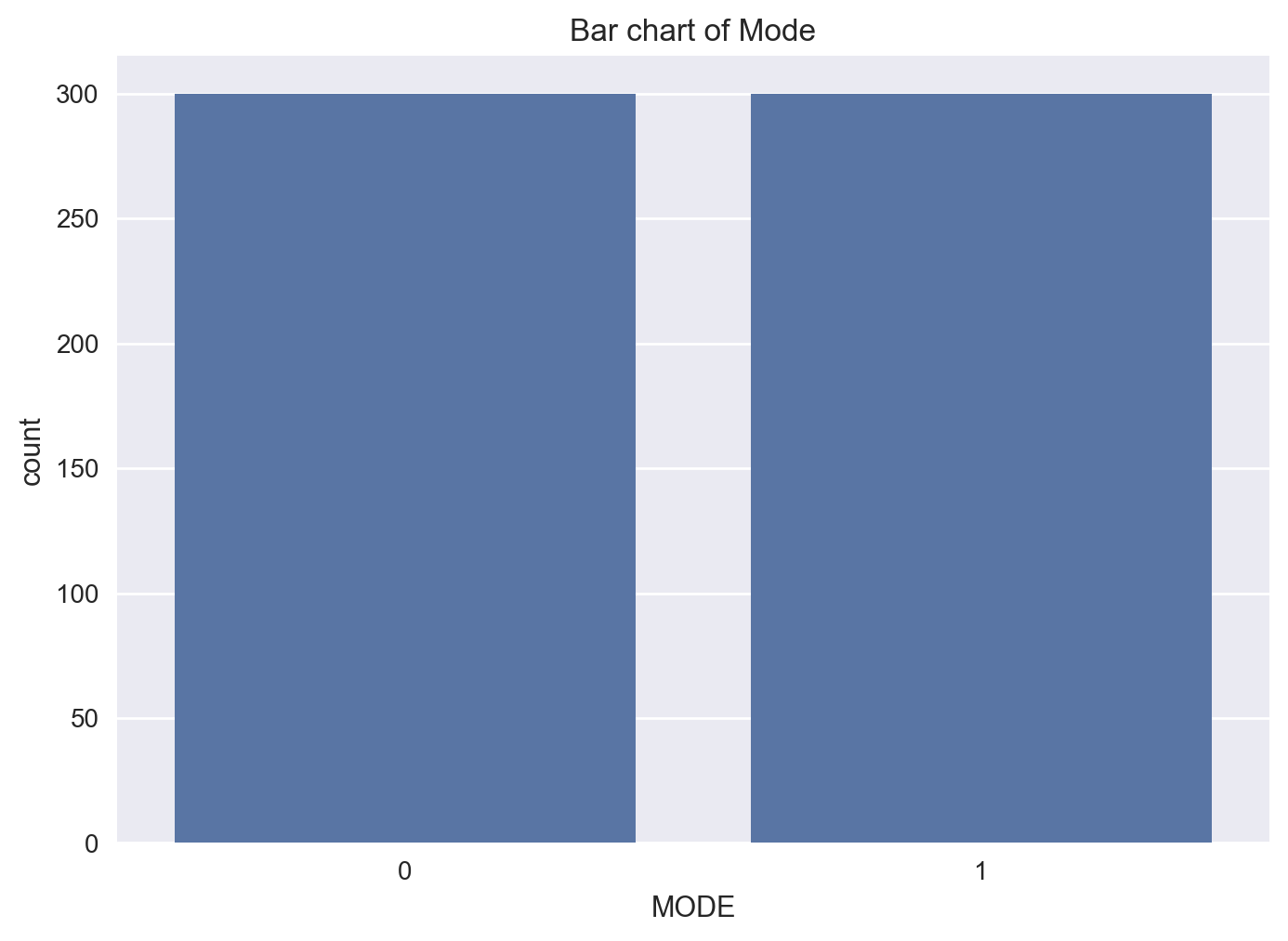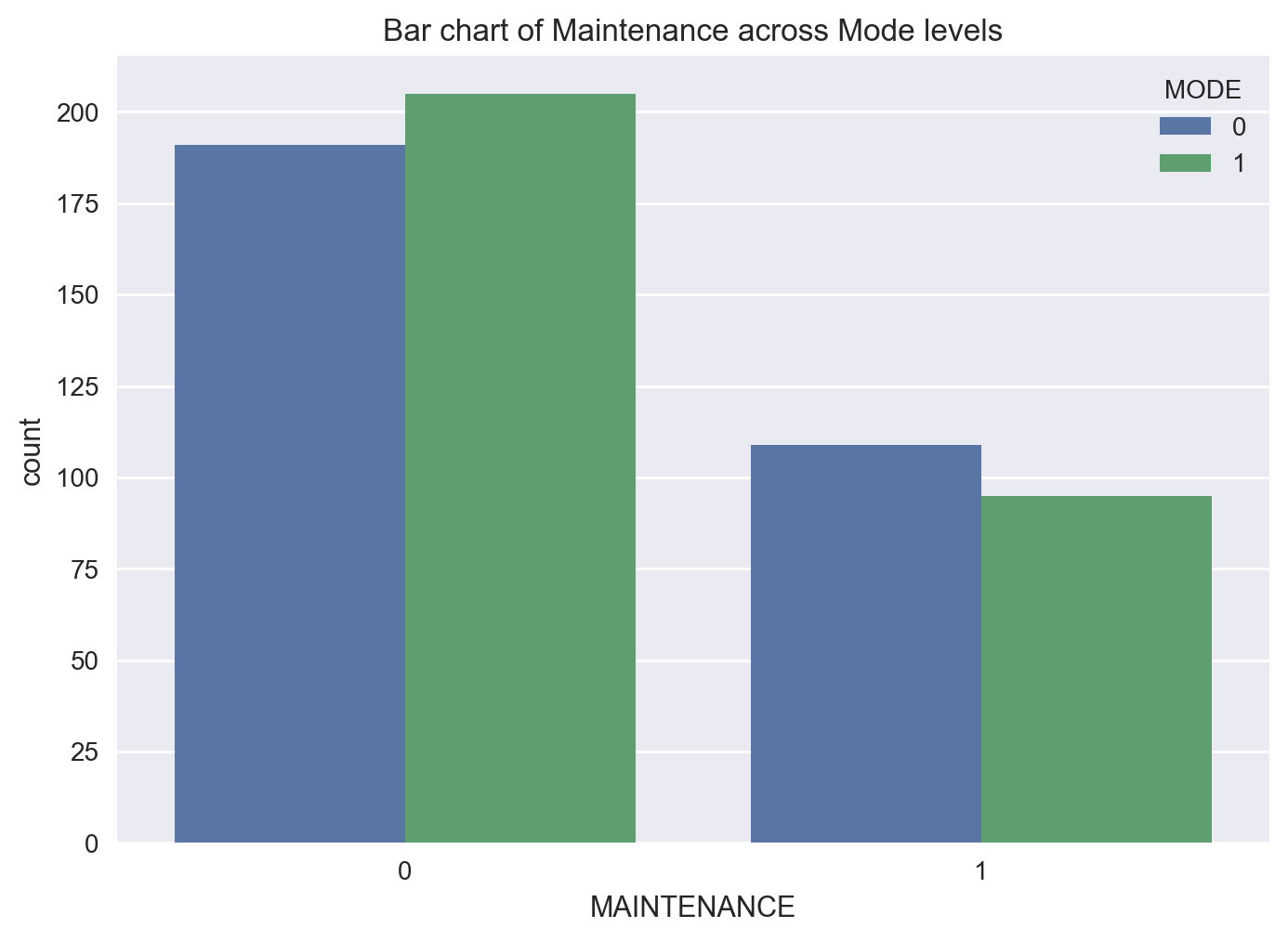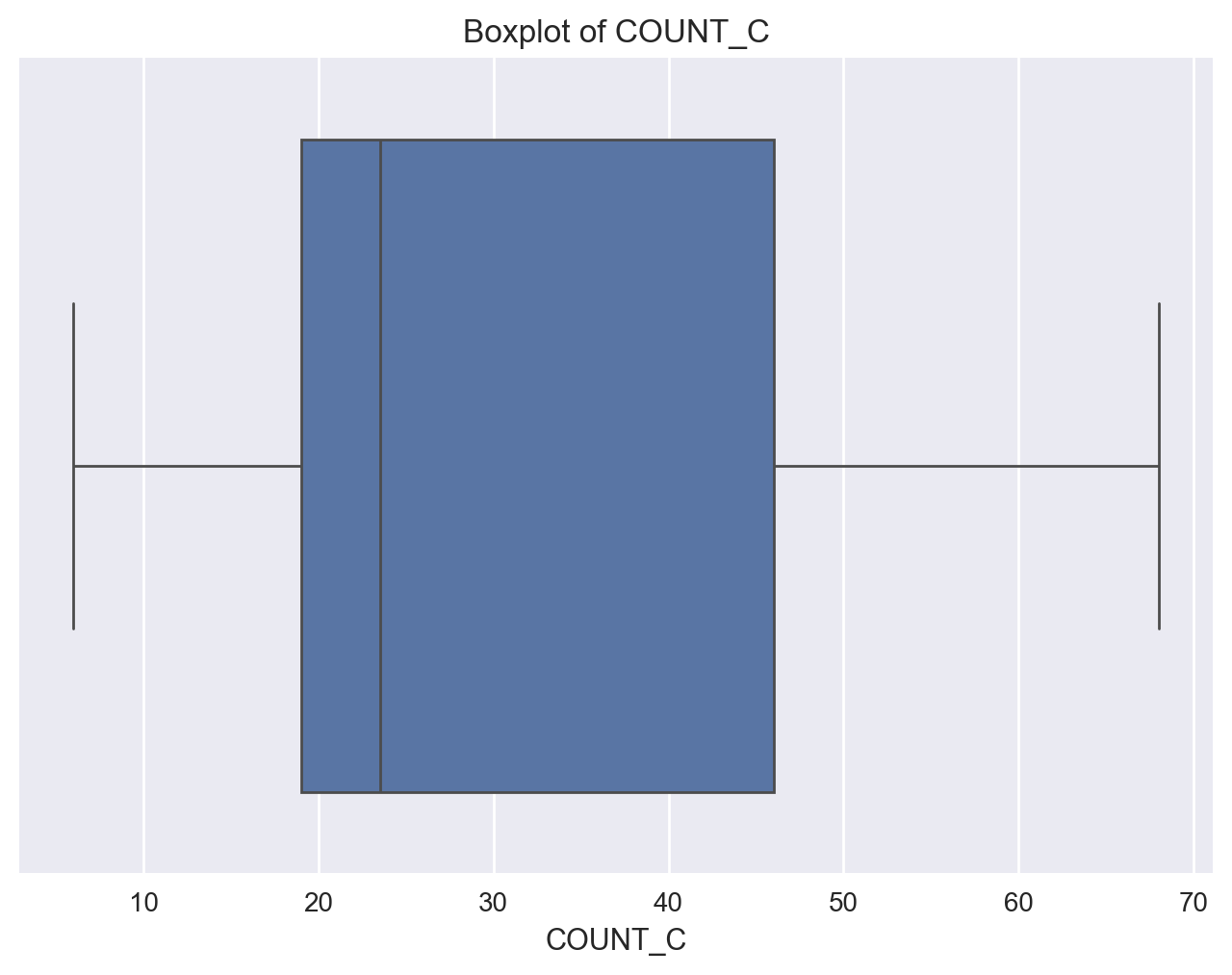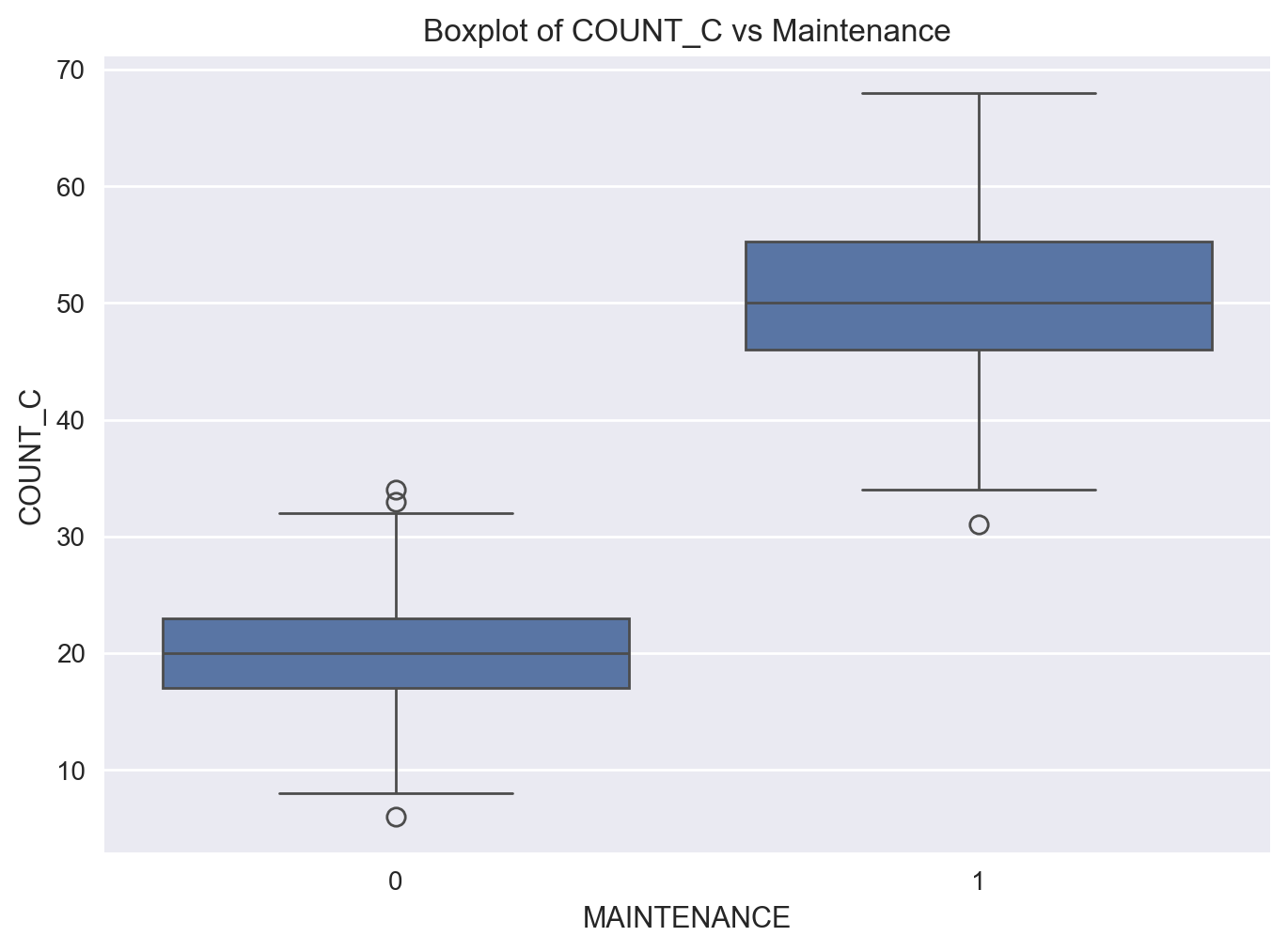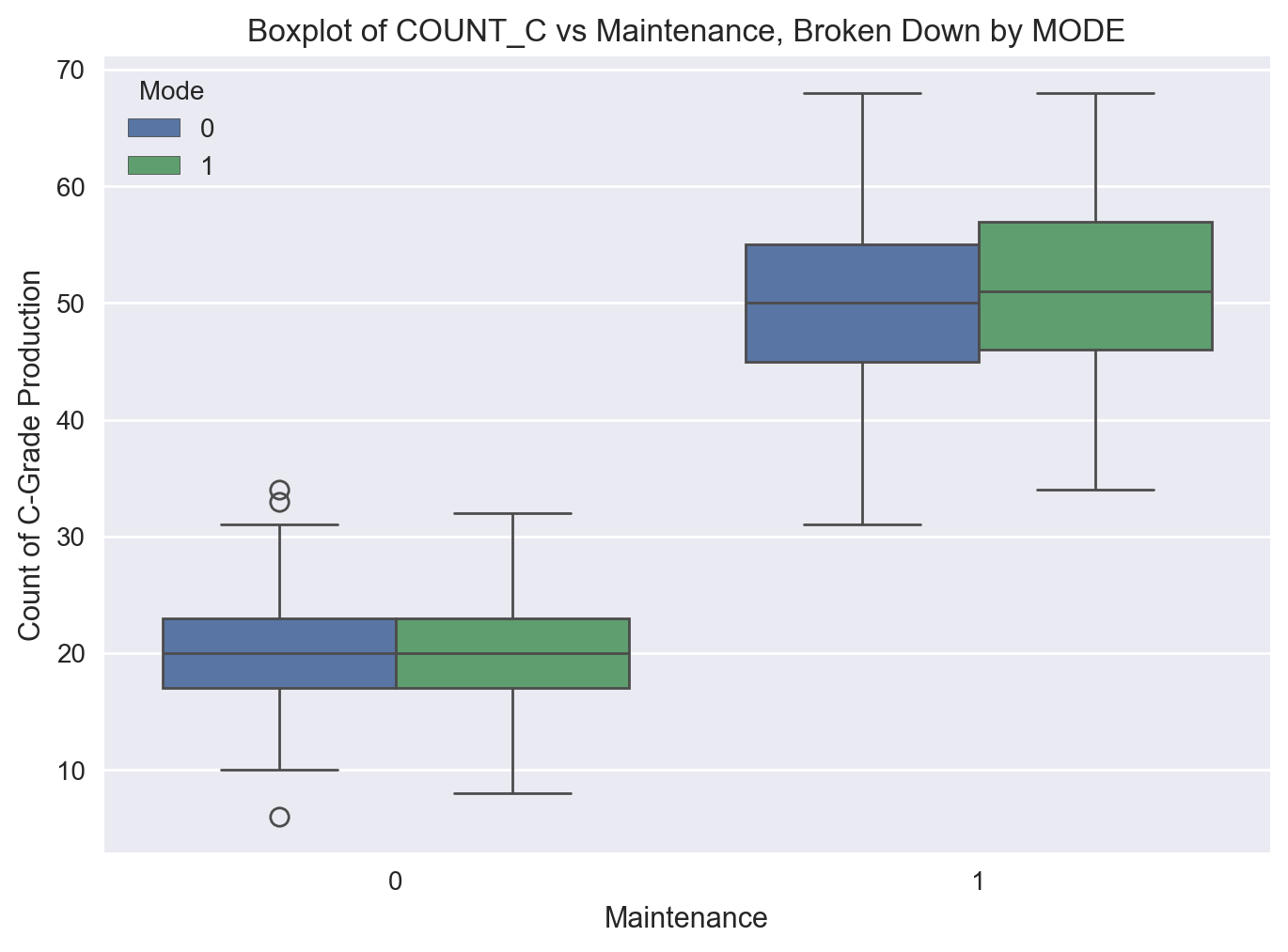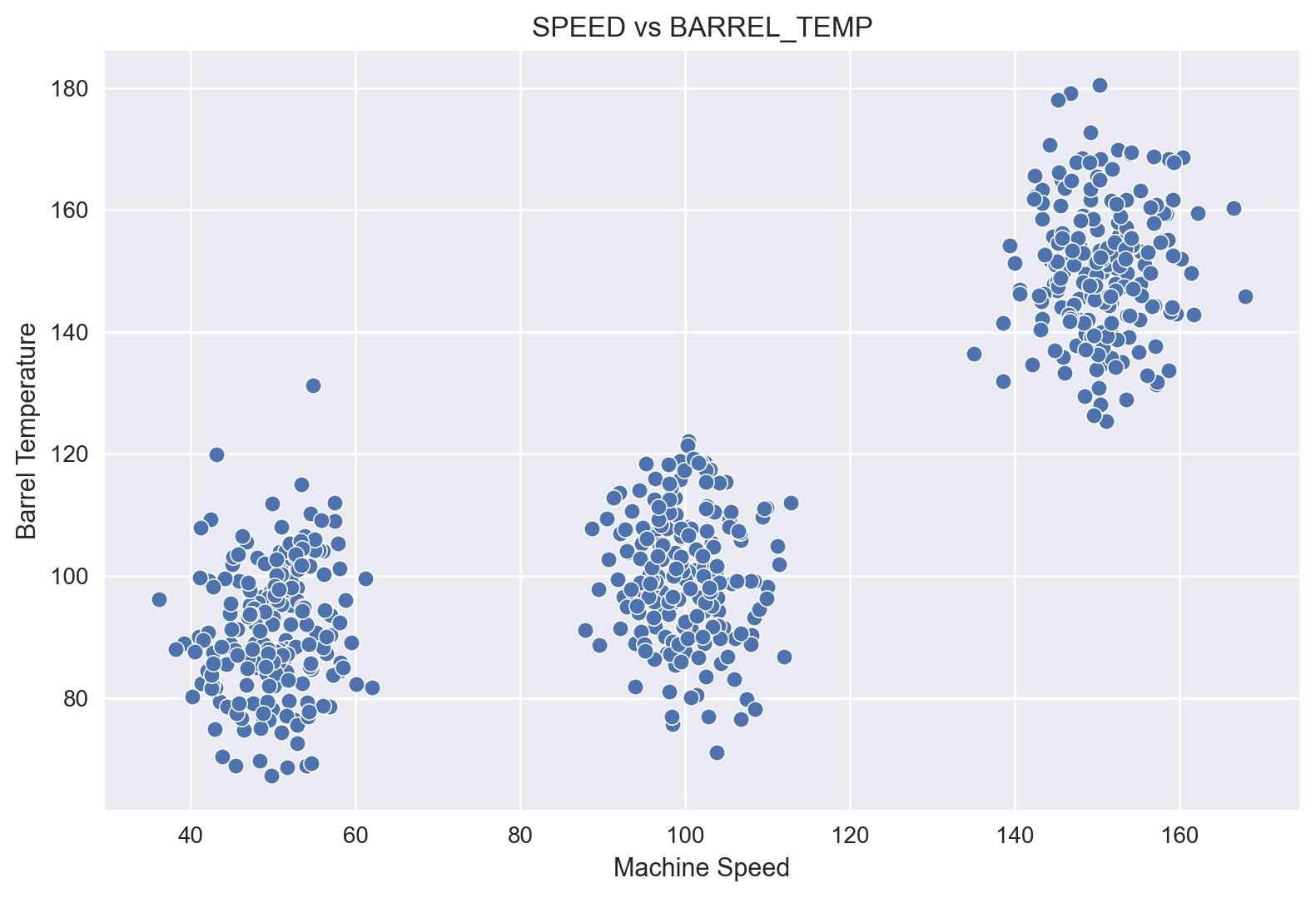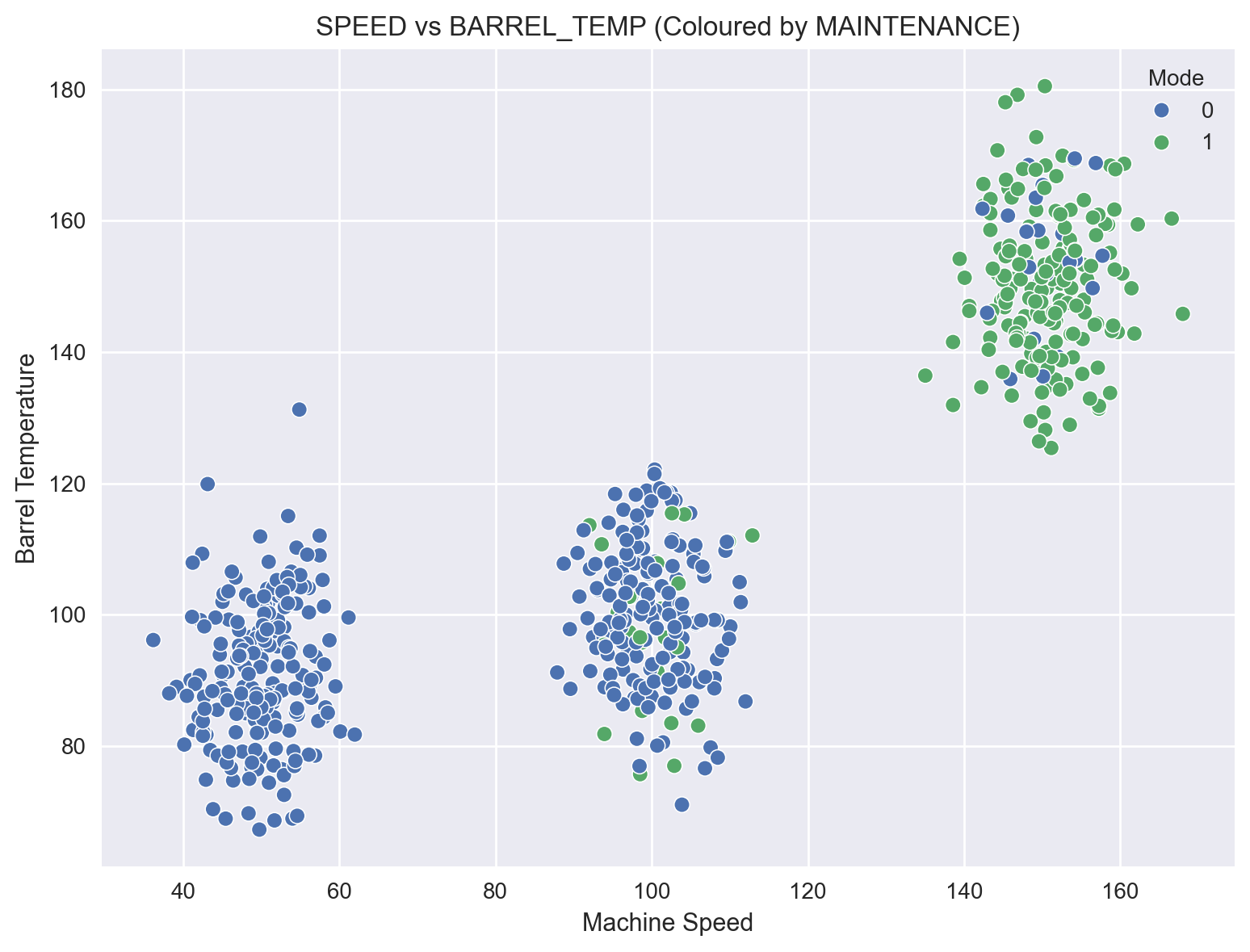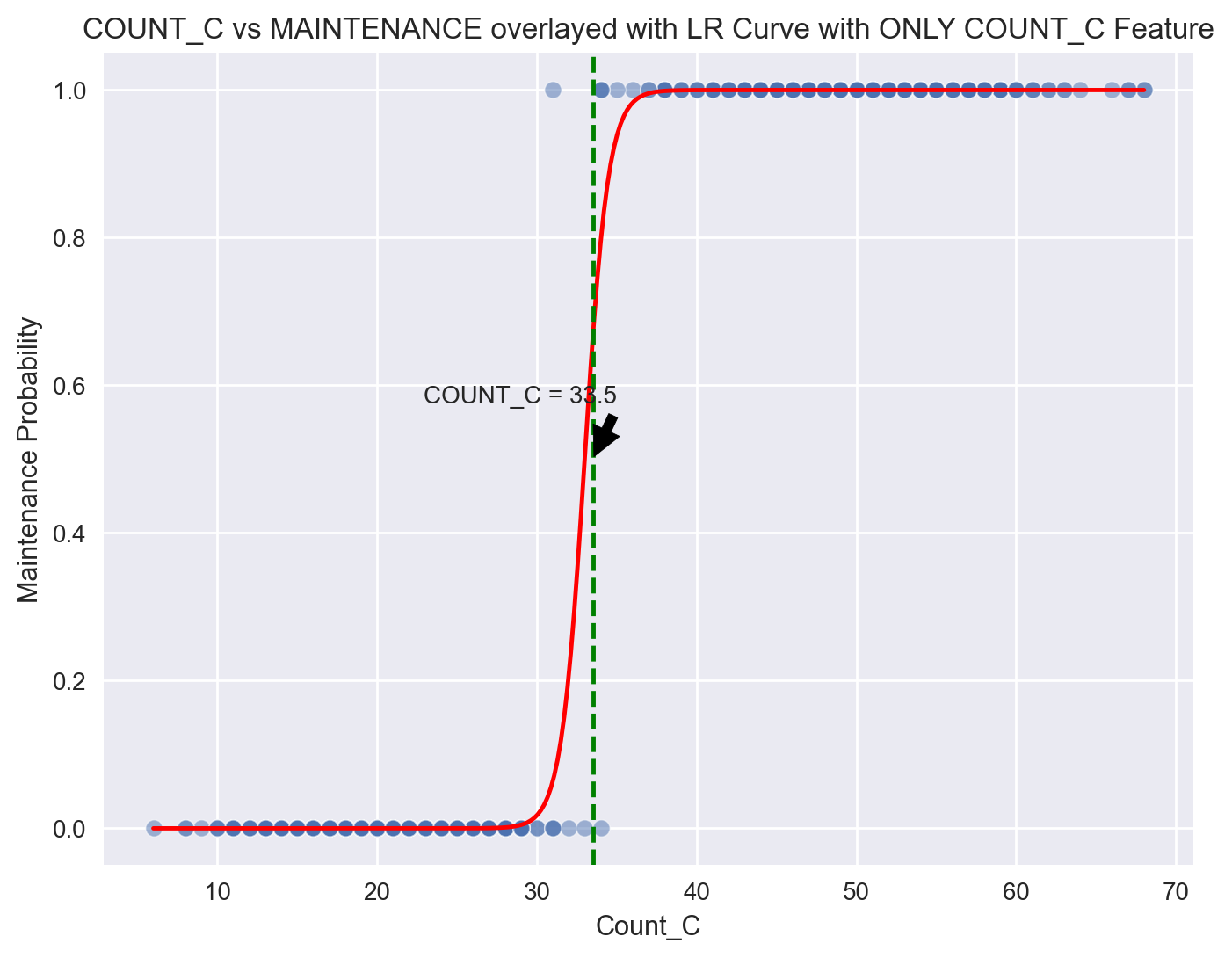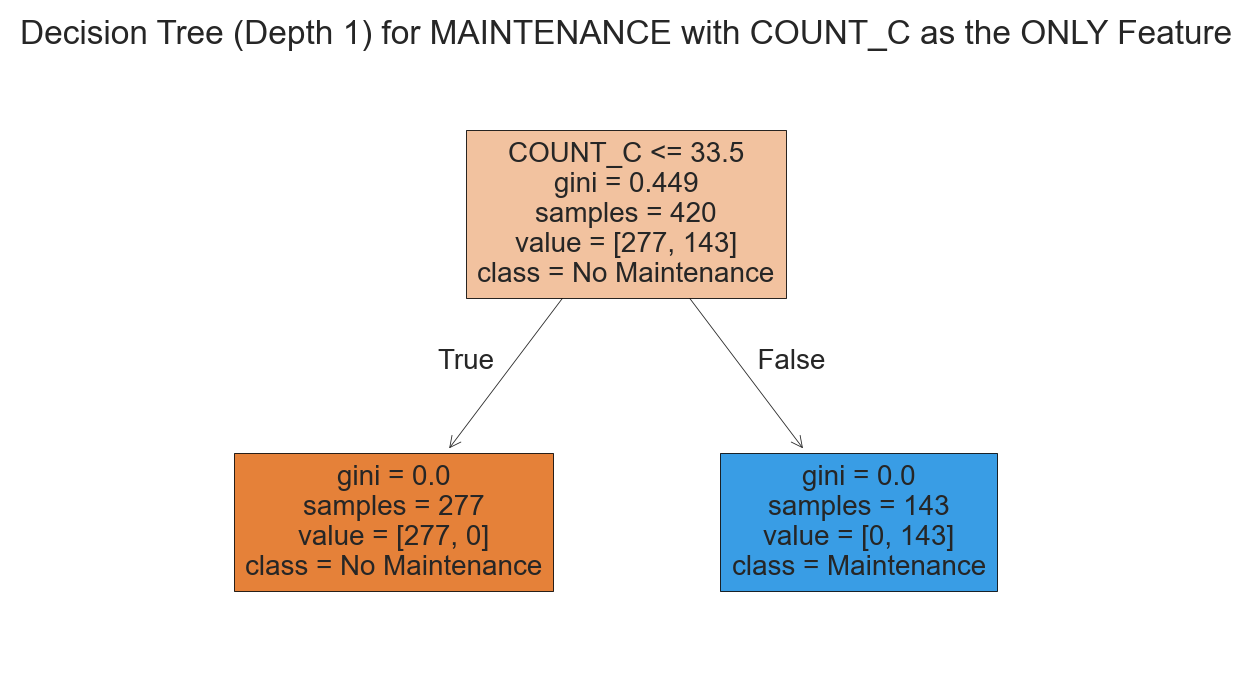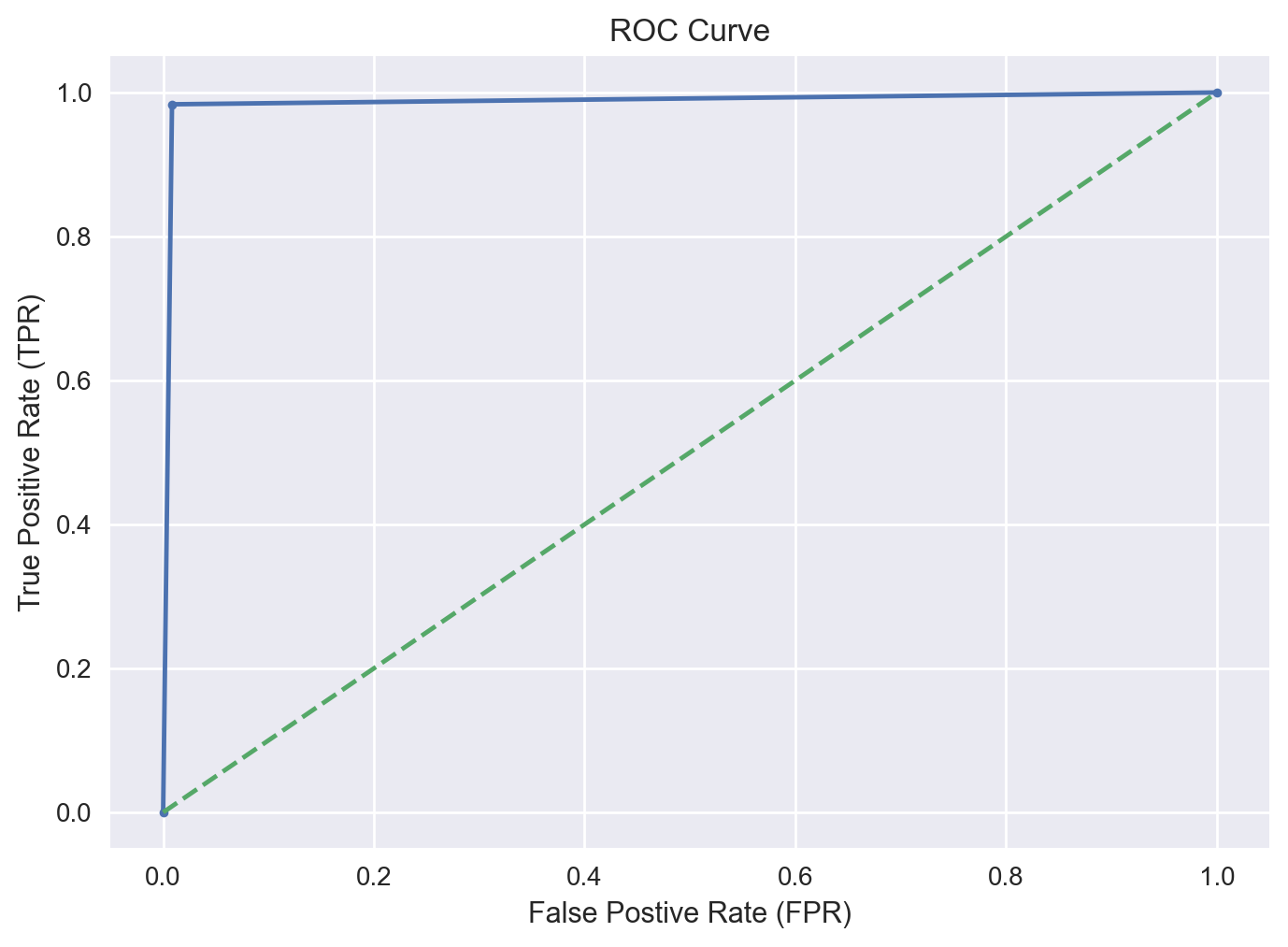Predicting Optimal Machine Maintenance Cycle#
Table of Contents#
Introduction and Overview #
In this study, we will investigate predicting optimal machine maintenance cycle.
We will treat this problem as a predictive modelling problem where the target feature is the Maintenance feature.
We will start with Exploratory Data Anaysis (EDA) followed by two machine learning model types: logistic regression and decision trees.
The dataset has 600 rows and seems to be in a clean state with no missing values or outliers, hence the lack of any data pre-processing efforts.
Our approach will be based on a train-test split of 70% train and 30% test.
We will fit 3 models:
A Logistic Regression model with all the descriptive features
A Logistic Regression model with only the
Count_CfeatureA Decision Tree model with only the
Count_Cfeature
We will be interested in the simple accuracy as well as the AUC metric as our performance metrics.
Let’s start with some preliminaries.
import warnings
warnings.filterwarnings("ignore")
import numpy as np
import pandas as pd
pd.set_option('display.max_columns', None)
###
import matplotlib.pyplot as plt
import seaborn as sns
%matplotlib inline
%config InlineBackend.figure_format = 'retina'
plt.style.use("seaborn-v0_8")
import requests
import io
# dataset to be imported
df_name = 'maintenance.csv'
# so that we can see all the columns
pd.set_option('display.max_columns', None)
df_url = 'https://raw.githubusercontent.com/akmand/datasets/master/' + df_name
url_content = requests.get(df_url, verify=False).content
df = pd.read_csv(io.StringIO(url_content.decode('utf-8')))
The first column is an ID column, so let’s drop it.
# ### df = pd.read_csv(df_name)
# drop the row ID column
df = df.iloc[:, 1:]
df.head()
| PRESSURE | BARREL_TEMP | SPEED | MODE | MAINTENANCE | COUNT_C | |
|---|---|---|---|---|---|---|
| 0 | 91.76 | 93.81 | 47.92 | 0 | 0 | 17 |
| 1 | 97.84 | 84.98 | 48.04 | 0 | 0 | 20 |
| 2 | 98.56 | 103.93 | 50.76 | 0 | 0 | 27 |
| 3 | 108.84 | 105.64 | 46.71 | 1 | 0 | 20 |
| 4 | 80.27 | 98.75 | 52.40 | 1 | 0 | 18 |
Exploratory Data Anaysis #
Let’s confirm that there are no missing values.
print(f"\nNumber of missing values for each feature:")
print(df.isnull().sum())
Number of missing values for each feature:
PRESSURE 0
BARREL_TEMP 0
SPEED 0
MODE 0
MAINTENANCE 0
COUNT_C 0
dtype: int64
Our dataset is now considered to be clean and we are ready to start visualising and exploring each feature.
Let’s have a quick look at the dataset at hand.
df.sample(5, random_state=999)
| PRESSURE | BARREL_TEMP | SPEED | MODE | MAINTENANCE | COUNT_C | |
|---|---|---|---|---|---|---|
| 428 | 287.03 | 147.36 | 154.98 | 0 | 1 | 47 |
| 566 | 301.00 | 179.16 | 146.82 | 0 | 1 | 57 |
| 511 | 298.03 | 143.20 | 158.90 | 1 | 1 | 46 |
| 103 | 81.12 | 85.73 | 48.14 | 1 | 0 | 29 |
| 86 | 96.18 | 85.69 | 48.82 | 1 | 0 | 32 |
Next, let’s check the data types and observe that they match the intended data types, thus no change is needed here.
from IPython.display import display, HTML
display(HTML('<b>Data types</b>'))
df.dtypes
PRESSURE float64
BARREL_TEMP float64
SPEED float64
MODE int64
MAINTENANCE int64
COUNT_C int64
dtype: object
Let’s have a look at a 5-number summary.
display(HTML('<b>Summary of numerical features</b>'))
df.describe(include=['int64','float64']).T.round(2)
| count | mean | std | min | 25% | 50% | 75% | max | |
|---|---|---|---|---|---|---|---|---|
| PRESSURE | 600.0 | 201.02 | 82.81 | 72.21 | 108.81 | 199.93 | 295.65 | 329.87 |
| BARREL_TEMP | 600.0 | 113.90 | 28.19 | 67.26 | 91.55 | 103.82 | 142.78 | 180.48 |
| SPEED | 600.0 | 100.20 | 41.39 | 36.17 | 53.49 | 99.88 | 146.83 | 167.99 |
| MODE | 600.0 | 0.50 | 0.50 | 0.00 | 0.00 | 0.50 | 1.00 | 1.00 |
| MAINTENANCE | 600.0 | 0.34 | 0.47 | 0.00 | 0.00 | 0.00 | 1.00 | 1.00 |
| COUNT_C | 600.0 | 30.44 | 15.43 | 6.00 | 19.00 | 23.50 | 46.00 | 68.00 |
Let’s have a look at the correlation matrix of the numerical features for some important insights.
correlation_matrix = df.drop(columns=['MODE', 'MAINTENANCE']).corr()
plt.figure(figsize=(6, 4))
sns.heatmap(correlation_matrix, annot=True, cmap='crest')
plt.title("Correlation Matrix Heatmap")
plt.show()
Observations#
SpeedandPressureare almost colinear with a correlation coefficient of 0.99.SpeedandBarrel Temperatureare highly correlated at 0.85.Barrel TemperatureandPressureare also highly correlated at 0.86.
At this point, we decide to drop the Pressure feature due to its extremely high correlation with Speed.
df = df.drop(columns=['PRESSURE'])
Maintenance#
Let’s have a look at the Maintenance target feature first.
df['MAINTENANCE'].value_counts(normalize=True)*100
MAINTENANCE
0 66.0
1 34.0
Name: proportion, dtype: float64
Mode Feature#
Count_C Feature#
fig = sns.boxplot(x='COUNT_C', data=df, orient="v")
fig = plt.title('Boxplot of COUNT_C')
plt.show()
fig = sns.boxplot(x='MAINTENANCE', y='COUNT_C', data=df)
fig = plt.title('Boxplot of COUNT_C vs Maintenance')
plt.show()
Observation
We notice that there is a significant difference between Count_C values for the two levels of the Maintenance feature.
Next, let’s see if Mode plays a role in this picture.
Scatter plots#
A scatter plot of Speed vs Barrel Temperature indicates a positive correlation.
A breakdown of this scatter plot across the Maintenance levels is quite revealing: majority of Maintenance occurs at high values of Speed and Barrel Temperature.
sns.scatterplot(x=df['SPEED'], y=df['BARREL_TEMP'])
plt.title('SPEED vs BARREL_TEMP')
plt.xlabel('Machine Speed')
plt.ylabel('Barrel Temperature')
plt.tight_layout()
plt.show()
plt.figure(figsize=(15, 6))
# SPEED vs BARREL_TEMP with MODE
plt.subplot(1, 2, 1)
sns.scatterplot(x=df['SPEED'], y=df['BARREL_TEMP'], hue=df['MAINTENANCE'])
plt.title('SPEED vs BARREL_TEMP (Coloured by MAINTENANCE)')
plt.xlabel('Machine Speed')
plt.ylabel('Barrel Temperature')
plt.legend(title='Mode')
plt.tight_layout()
plt.show()
Logistic Regression #
Logistic Regression with All Descriptive Features#
We will perform a 70/ 30 percent train/ test split.
print(f"{df.columns = }")
df.columns = Index(['BARREL_TEMP', 'SPEED', 'MODE', 'MAINTENANCE', 'COUNT_C'], dtype='object')
Data = df.drop(columns=['MAINTENANCE']).values
target = df['MAINTENANCE']
from sklearn.model_selection import train_test_split
D_train, D_test, t_train, t_test = \
train_test_split(Data, target, test_size = 0.3,
stratify=target, shuffle=True, random_state=111)
from sklearn.linear_model import LogisticRegression
clf = LogisticRegression()
clf.fit(D_train, t_train);
print(f"LR Test Accuracy (All Features): {clf.score(X=D_test, y=t_test):.2f}")
LR Test Accuracy (All Features): 0.99
We observe that the model is a pretty good fit with 99% accuracy.
Logistic Regression with ONLY Count_C Feature#
Data = df[['COUNT_C']].values
target = df['MAINTENANCE']
D_train, D_test, t_train, t_test = \
train_test_split(Data, target, test_size = 0.3,
stratify=target, shuffle=True, random_state=111)
clf.fit(D_train, t_train);
print(f"LR Test Accuracy (ONLY Count_C Feature): {clf.score(X=D_test, y=t_test):.2f}")
LR Test Accuracy (ONLY Count_C Feature): 0.99
Interestingly, we see that the LR model with ONLY the Count_C feature is almost as good as the previous model with all the features with 99% accuracy.
Plotting COUNT_C vs MAINTENANCE with the logistic regression curve#
# data for the logistic regression curve
linspace_count_c = np.linspace(df['COUNT_C'].min(), df['COUNT_C'].max(), 300).reshape(-1,1)
probabilities = clf.predict_proba(linspace_count_c)[:, 1]
# Plot COUNT_C vs MAINTENANCE with the logistic regression curve
plt.figure(figsize=(8, 6))
sns.scatterplot(x=df['COUNT_C'], y=df['MAINTENANCE'], alpha=0.5)
plt.plot(linspace_count_c, probabilities, color='red')
plt.axvline(x=33.5, color='green', linestyle='--')
plt.annotate('COUNT_C = 33.5', xy=(33.5, 0.5), xytext=(35, 0.6),
arrowprops=dict(facecolor='black', shrink=0.05),
horizontalalignment='right', verticalalignment='top')
plt.title('COUNT_C vs MAINTENANCE overlayed with LR Curve with ONLY COUNT_C Feature')
plt.xlabel('Count_C')
plt.ylabel('Maintenance Probability')
plt.show()
Decision Trees #
Decision Tree with ONLY Count_C Feature with a Depth of 1#
For simplicity, we will fit a Decision Tree with ONLY the Count_C feature and with a depth of 1.
I tried a full model with all the features and accuracy was about the same with 99% accuracy, so I’m not including it here in this report.
Data = df[['COUNT_C']].values
target = df['MAINTENANCE']
D_train, D_test, t_train, t_test = \
train_test_split(Data, target, test_size = 0.3,
stratify=target, shuffle=True, random_state=111)
from sklearn.tree import DecisionTreeClassifier
clf = DecisionTreeClassifier(max_depth=1, random_state = 999)
clf.fit(D_train, t_train);
print(f"LR Test Accuracy (ONLY Count_C Feature): {clf.score(X=D_test, y=t_test):.2f}")
LR Test Accuracy (ONLY Count_C Feature): 0.99
Confusion Matrix#
Let’s work out the confusion matrix.
from sklearn import metrics
t_pred = clf.predict(D_test)
metrics.confusion_matrix(t_test, t_pred)
array([[118, 1],
[ 1, 60]])
AUC Score & ROC Curve#
Now, let’s calculate the test AUC score. The closer to 1, the better. We shall also plot the ROC curve.
t_prob = clf.predict_proba(D_test)
fpr, tpr, _ = metrics.roc_curve(t_test, t_prob[:, 1])
roc_auc = metrics.auc(fpr, tpr)
print(f"AUC for DT with ONLY COUNT_C Feature: {roc_auc:.2f}")
AUC for DT with ONLY COUNT_C Feature: 0.99
Model Deployment #
Final Model Training#
For model deployment, we will use the entire dataset for training of our final Decision Tree model.
We will save the model so that we can use it later on for making predictions in production.
Data = df[['COUNT_C']].values
target = df['MAINTENANCE']
clf = DecisionTreeClassifier(max_depth=1, random_state = 999)
clf.fit(D_train, t_train);
import joblib
joblib.dump(clf, 'DT.pkl', compress = 1)
['DT.pkl']
Making Predictions with the DT Model#
We will assume that the observation to be predicted will come as a JSON object as part of a GET endpoint call.
For simplicity, we will represent the observation as a dictionary.
Since our Decision Tree model uses only the Count_C feature, our dictionary will have only one key.
First, let’s load back the trained model for making the actual prediction.
saved_dt = joblib.load('DT.pkl')
pred_obs = {
"COUNT_C": 17.00
}
# Convert the dictionary to a 2D array
obs_array = np.array(list(pred_obs.values())).reshape(1, -1)
# Make a prediction with the saved model
prediction = saved_dt.predict(obs_array)
print(prediction)
[0]
Summary and Conclusions #
We observe that the Count_C feature seems be an excellent predictor for the Maintenance target feature.
A logistic regression model with all the descriptive features gives very similar results to a model with ONLY the Count_C feature, with both models having a test accuracy of about 99%.
Likewise, a simple decision tree with a depth of 1 also has a test accuracy of about 99% and an AUC score of 0.99.
Thus, the simple depth 1 decision tree rule below results in a 99% test accuracy:
If
Count_C< 33.5, then Prediction is Maintenance NOT Required.If
Count_C>= 33.5, then Prediction is Maintenance IS Required.
We also present a proof-of-concept on how to train the final model for deployment and how to make predictions with the final model.
